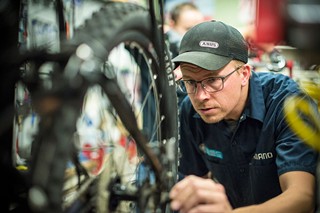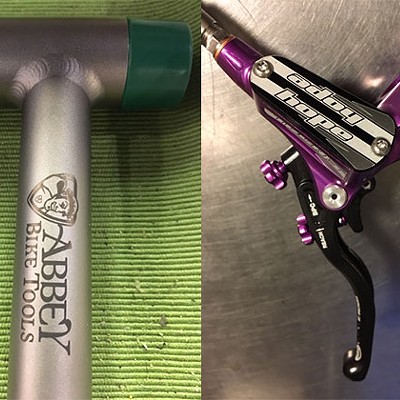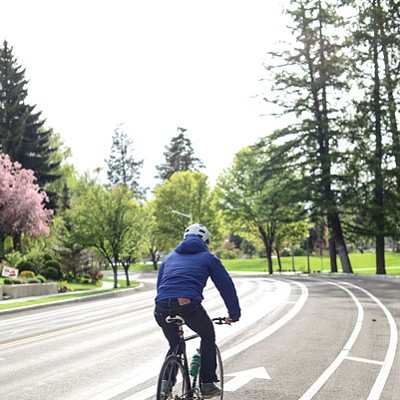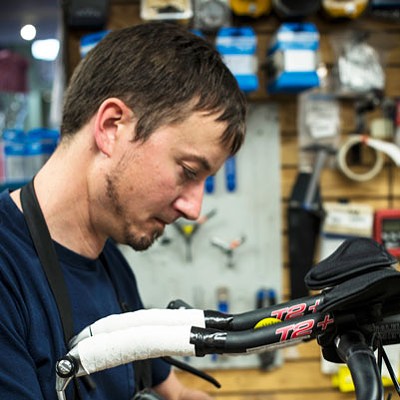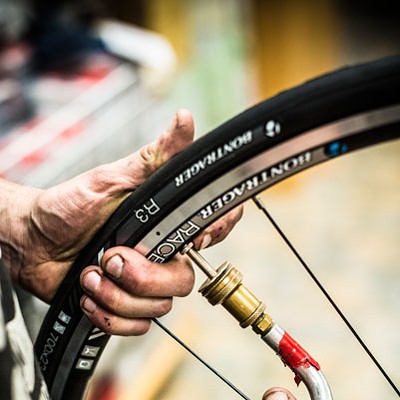"You're the motor," bike mechanic and Hub Cyclery co-owner Matt Snow said from underneath the brim of his black hat, emblazoned with the store's blue and white logo.
But even so, for a motor to do its best work, it needs to have a machine that is working well.
"When you ride it into the ground," Snow said as he circled a bike suspended in air by a workstand, "it gets exponentially more expensive to repair."
Springtime is the NW Wall St. shop's busiest season, keeping Snow and his partner TJ Jordan, who moved to Bend about a year ago from Southern California, working on bikes seven days a week. And they continue that brisk pace all the way through the fall. A good deal of that work is maintenance, just to keep each bike component in working condition. But switching out parts after customers dig up a bike from the back of a garage, dust it off and bring it into the shop takes up time, too.
"Sometimes you'll have to replace the chain, cassette and chain rings," Snow said, intently examining the bike he was preparing to work on. "Basically, anything that this chain touches, they wear. So, it's one of those things where I'll replace a chain for the customer, and they'll get on their bike, and it'll start skipping. If I can't get it working properly, they're going to need a new cassette...That's the main problem."
Snow adds that customers' choosing replacement parts sometimes has to do with brand loyalty. Still, pulling all of those components off of a bike can get expensive—prices range, but just that chain and cassette, along with labor can push the $200 mark. Putting off or ignoring those kinds of relatively easy fixes, though, can eventually land a rider in a dangerous spot.
Having a chain slip can basically disallow a rider from making it between point A and point B. Even more dangerous, Snow said, is ignoring the brakes, and the danger there is pretty obvious.
"Tires would be a big thing, too" Snow continued, touring the store and plucking components and gear off its walls. "They could wear out a few times a year, depending on how much you ride—if you're an avid rider, you're going through a pair of tires a year, at least."
The need for new tires also can be accelerated by riding in an urban environment—it's not unheard of to run over some broken glass or pick up a stray nail that slowly leaks air from a tire. Those fluke accidents aside, Snow said that yearly tuneups are the best, easiest and cheapest way to keep a bike in proper, working order. So, dropping $40 for a basic tune up or $100 for a complete job is going to save money on high-price replacement parts down the road.
Basic tune-up: $60
Complete tune: $100
Brake pads: $10-$52
Grip tape: $12-$40
Chain: $10-$34
Cassette: $47-$119
Pedals: $17.99-$199.95
Tires: $50-$80 apiece.
Wheelset: $300-$400, but could go as high as $2,000

